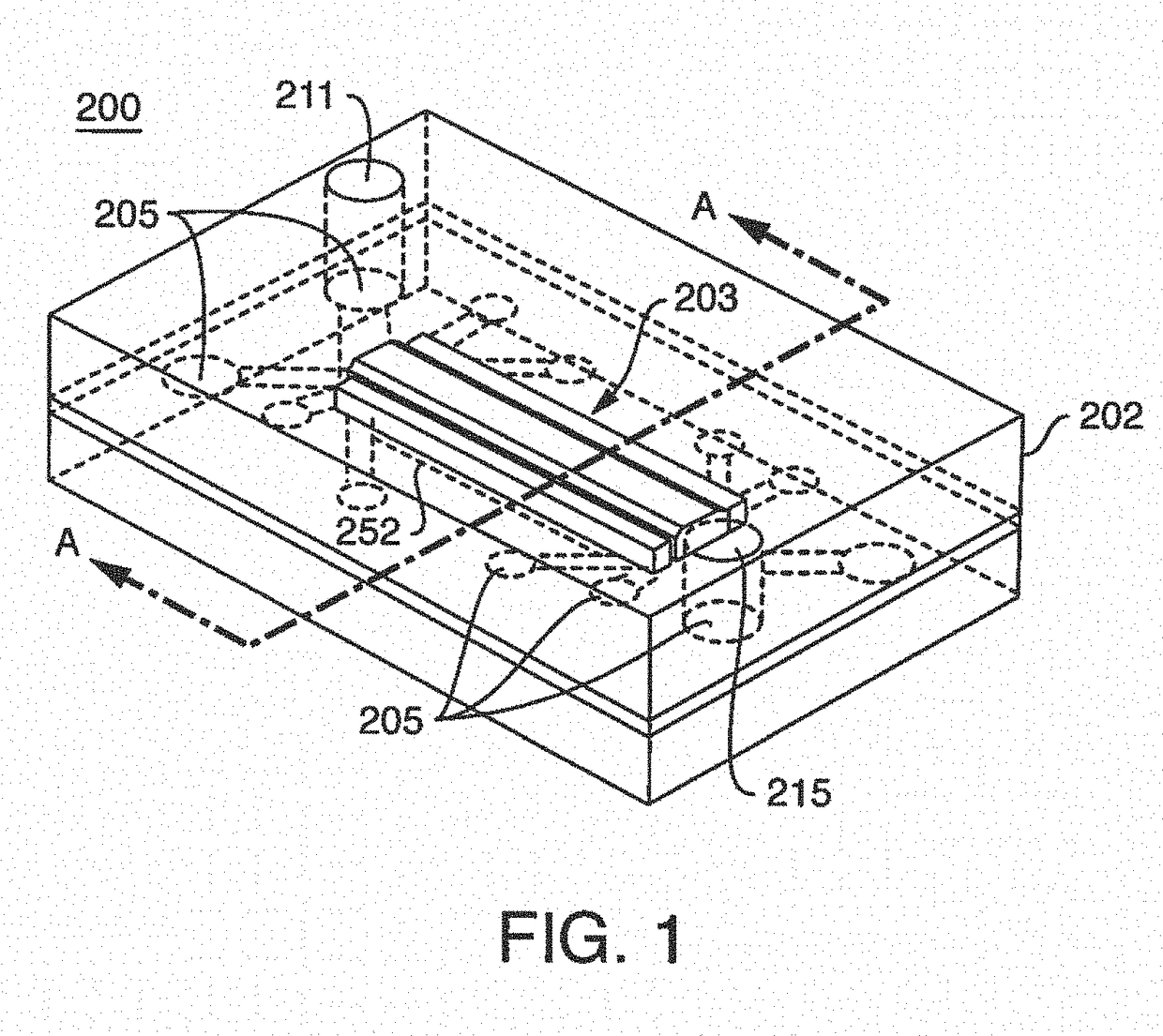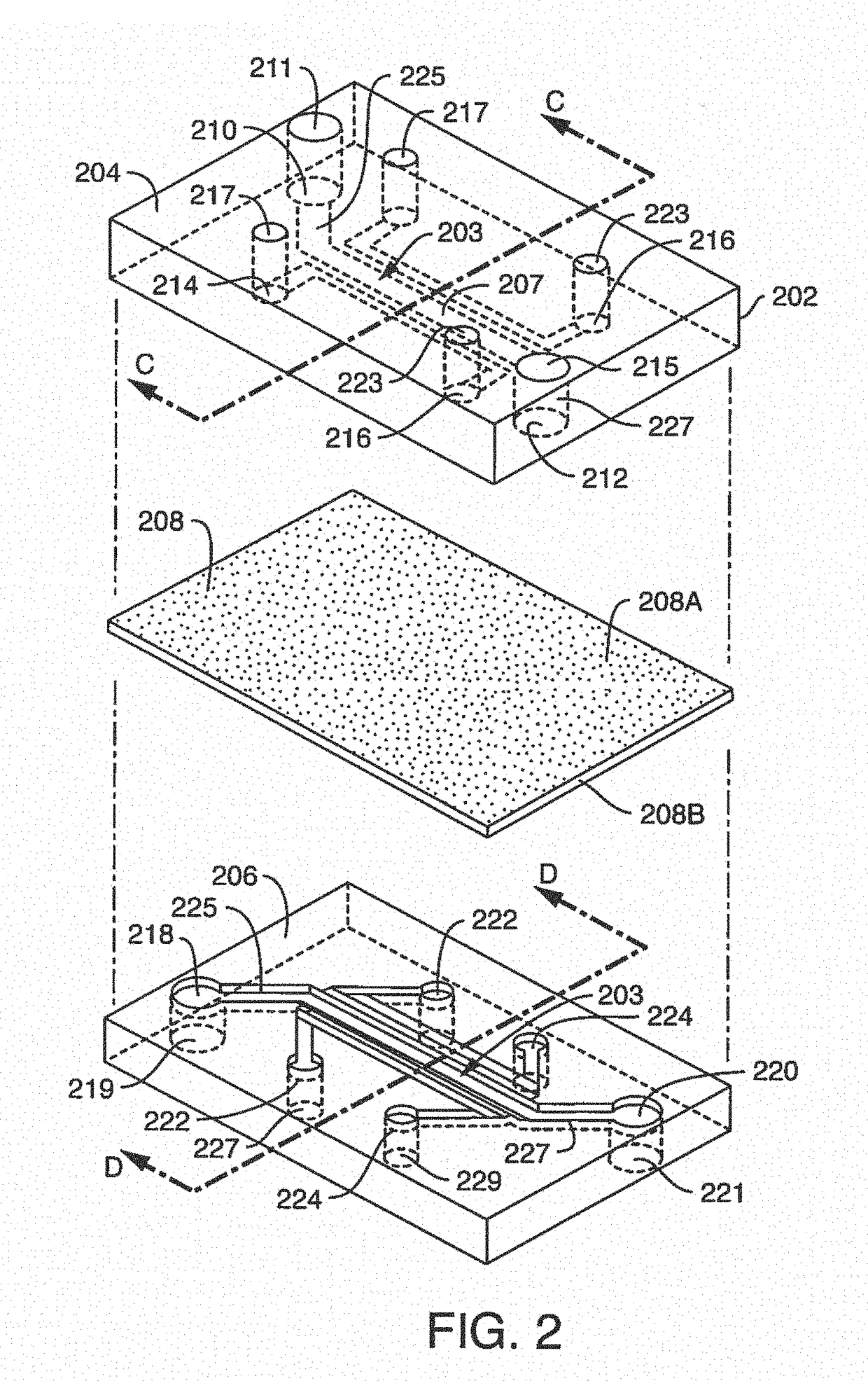Additive channels
a technology of additive channels and channels, applied in biochemistry apparatus and processes, laboratories, instruments, etc., can solve the problems of difficult to accurately and reliably assess platelet function, and subject cells to shear stress, so as to prevent blood clotting, prevent coagulation, and amplify the potential spectrum of applications of this anticoagulant
- Summary
- Abstract
- Description
- Claims
- Application Information
AI Technical Summary
Benefits of technology
Problems solved by technology
Method used
Image
Examples
example 1
Materials And Methods
[0299]This example describes exemplary materials and methods used during the development of the present inventions.
[0300]Microfluidic Chip Manufacturing And Surface Activation; Chip design and fabrication as used herein, were initially modified versions of previously described chips (See, Huh, D. el al. Microfabrication of human organs-on-chips, Nat Protoc. 8:2135-2157 (2013). In further embodiments, chip designs used herein and contemplated chip designs are unlike previously published chips.
[0301]In one embodiment, the surface area of the vascular compartment of a microfluidic chip used herein is greater in comparison to the original lung-on-a-chip design because the original size was too small for optimal blood component interaction with endothelium. As described herein, a 1 mm wide and 200 um tall chamber provided an increase in size of the vascular surface area exposed to laminar flow, as compared to an exemplary lung-on-chip. An anticoagulant port, referred...
example 2
Endothelial cells control clotting in the Vessel-On-Chip
[0325]This example describes exemplary clotting on the chip that is controlled by endothelial cells.
[0326]sCollagen treatment of blood activates blood components while endothelial pre-treatment with TNF-α mimics (simulates) tissue inflammation. Therefore, sCollagen treated blood was added to a Vessel-On-Chip containing TNF-alpha pre-treated endothelial cells (endothelium), for simulating inflammation.
[0327]More specifically, INF-α (50 ng / ml) was added to a Vessel-On-Chip for contact with the endothelium for 6 hours of incubation. Soluble collagen (sCollagen), a standard platelet activator, was used at 10 μg / ml for treating blood samples, either prior to adding to a Vessel-On-Chip or through an additive channel attached to an intake port as the blood sample is being added to the intake port.
[0328]The use of TNF-α or sCollagen treatments on thrombosis in a Vessel-On-Chip led to more aggressive patterns of platelet aggregation and...
example 3
Testing The Use Of An Additive Channel In A Vessel-On-Chip For On-Chip Biomarker Assessment And Treatment With A Candidate Drug
I. Additive Channel
[0331]In order to functionally test the additive channel (i.e. microfluidic chamber(s)) attached to the outflow port of a Vessel-On-Chip, re-calcified blood was perfused through the inlet port while citrate was introduced online from a port situated next to the outflow port, flowing through the additive channel. Thus, blood obtained from the effluent of chips equipped with the anticoagulant port (additive channel) or without anticoagulant port were compared (FIG. 6). From a qualitative point of view the difference was striking. Introduction of sodium citrate through the anticoagulant port allowed for collection of soluble (not clotted) blood at the end of each experiment that remained in the liquid status (FIG. 6).
II. Vessel-On-Chip Biomarker Assessment
[0332]Blood sampled from the Vessel-On-Chip outflow port was analyzed for thrombin anti-...
PUM
| Property | Measurement | Unit |
|---|---|---|
| length | aaaaa | aaaaa |
| length | aaaaa | aaaaa |
| diameter | aaaaa | aaaaa |
Abstract
Description
Claims
Application Information
 Login to View More
Login to View More - R&D
- Intellectual Property
- Life Sciences
- Materials
- Tech Scout
- Unparalleled Data Quality
- Higher Quality Content
- 60% Fewer Hallucinations
Browse by: Latest US Patents, China's latest patents, Technical Efficacy Thesaurus, Application Domain, Technology Topic, Popular Technical Reports.
© 2025 PatSnap. All rights reserved.Legal|Privacy policy|Modern Slavery Act Transparency Statement|Sitemap|About US| Contact US: help@patsnap.com



